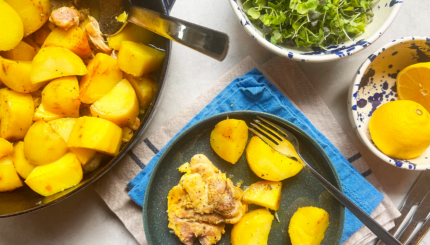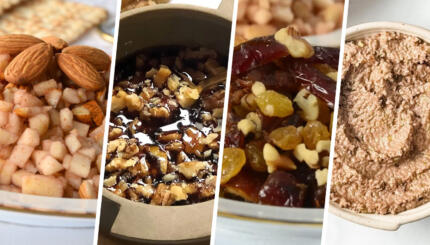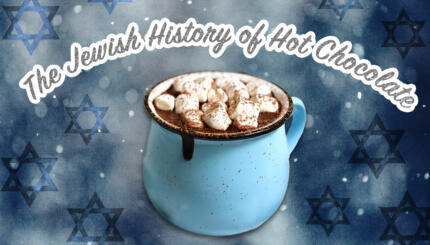Father-son rabbinic dynasties are nothing new, but Rabbis Sion and Braham David stand out as a family of firsts who have an especially strong dedication to Jewish tradition and a love of Passover.
Both Rabbis David are Bene Israel Jews who trace their roots back more than a thousand years in India. The documentary evidence of the roots of this community are lost to time, but as Rabbi Sion David explains, the story that was passed through the generations tells of travelers who were shipwrecked off the Indian coast, long before the Romans captured Jerusalem or the Maccabees rebelled.
The community thrived through the generations; they were shopkeepers and merchants, movie stars and professionals, but not rabbis. Until Sion David.
In 1966, Rabbi Sion David was the first Bene Israel to be ordained a rabbi when he graduated from Hebrew Union College. In 2003, his son Braham David followed in his father’s footsteps, becoming the first Bene Israel to be ordained in the Conservative movement.
The majority of Indian Jews have in recent years emigrated to Israel and other Western countries, and neither Rabbi Davids have served pulpits in India. But the customs and memories of Jewish life in India remain part of their Jewish lives in America.
Rabbi Sion David recalls that in India, preparation for Passover included having all the household pots refinished so they would be kosher for the holiday. “We did not have the packaged goods like the matzot, and you did without the stuff we take for granted today,” he says. Matzah was made by hand. It was large and round and crisp like a cracker, made at home or purchased at the synagogue. It was not rolled out. Instead, the ball of dough was tossed from hand to hand back and forth until it was thin and round. Then it was put in a stone oven built into the ground and baked within the 18 minutes allotted.
Serving as rabbi of Temple Shalom in Medford, Massachusetts, Rabbi Braham David does not make his own matzah, but he does still make the traditional Bene Israel Indian haroset called shira. Shira is similar to chalek, a version of haroset made by North African and Middle Eastern Jews, but unlike chalek, it is made exclusively from dates. “It is more of a syrup than a paste,” explains Braham David. It is work and time intensive but it is well worth it, he says.
The flavor and texture of shira is so central to the David family seder that when the junior David was studying in Israel, he went out of his way to make it. Finding the dates was easy enough, but the recipe pivots on squeezing the cooked mixture through cheesecloth and “I did not know where to find it, or how to say it in Hebrew.” In desperation, Braham David went into a fabric stall in the market and tried in vain to explain what he was looking for. “I was getting nowhere,” he explains, “until I said, ‘haroset.’ Then the shop owner pulled out a bolt of cheesecloth and the effort was saved.”
Directions for making David family Shira
The following is a recipe in the loosest form. As with many historic recipes, it comes down to us as a set of directions. Feel free to adjust.
Ingredients:
Water (approximately 6 cups)
Best quality dates you can find (Medjool dates are best) approximately 2lb pitted and chopped, approximately 6 cups
Special equipment:
Heavy pan
Cheesecloth
Directions:
Place chopped dates in a heavy saucepan.
Cover with water.
Bring to a boil and then reduce to simmer over very low heat.
Simmer until the dates are well dissolved, this can take more than 20 or 30 minutes. Stir constantly. Dates should fall apart.
Remove pot from heat and let the mixture cool completely.
When the mixture is cool, gather large spoonfuls in cheesecloth.
Squeeze out the liquid from the solids over a heavy bottom pan. This will take time and effort. Do not stop until all the liquid has been separated from the solids.
Put the heavy bottom pan over a medium flame. Stirring continuously bring to a boil.
Reduce to a low simmer. Continue to stir. If you do not stir there is a danger the shira will burn.
When the liquid has reduced to a syrupy consistency and coats a metal spoon, remove from the flame. Be careful not to overcook! Syrup will become thicker as it cools.
Cool the shira fully before serving.
Helaine Mazin David, Rabbi Sion David’s wife and Rabbi Braham David’s mother, was born and raised in Louisville, Kentucky. Despite her non-Indian roots, she has been making shira for many years and offered this additional insight to the recipe the rabbis shared:
“When Sion and I make shira, it is a team effort. Depending how much shira we make, we use one to three pounds of medjool dates. (The ratios stay the same.) We cover with water and cook until the dates pull apart. We then let it cool. At this point Sion uses cheesecloth to squeeze out the liquid and dispose of the remains. For many years we would cook it on the stove and keep stirring it constantly. Now we use a microwave with a glass covered pot. We start off microwaving for 20 minutes. We check often to see if the liquid is thickening. As it starts to get thicker, checking often is the key. One year I went a little too far and the whole thing exploded!”



